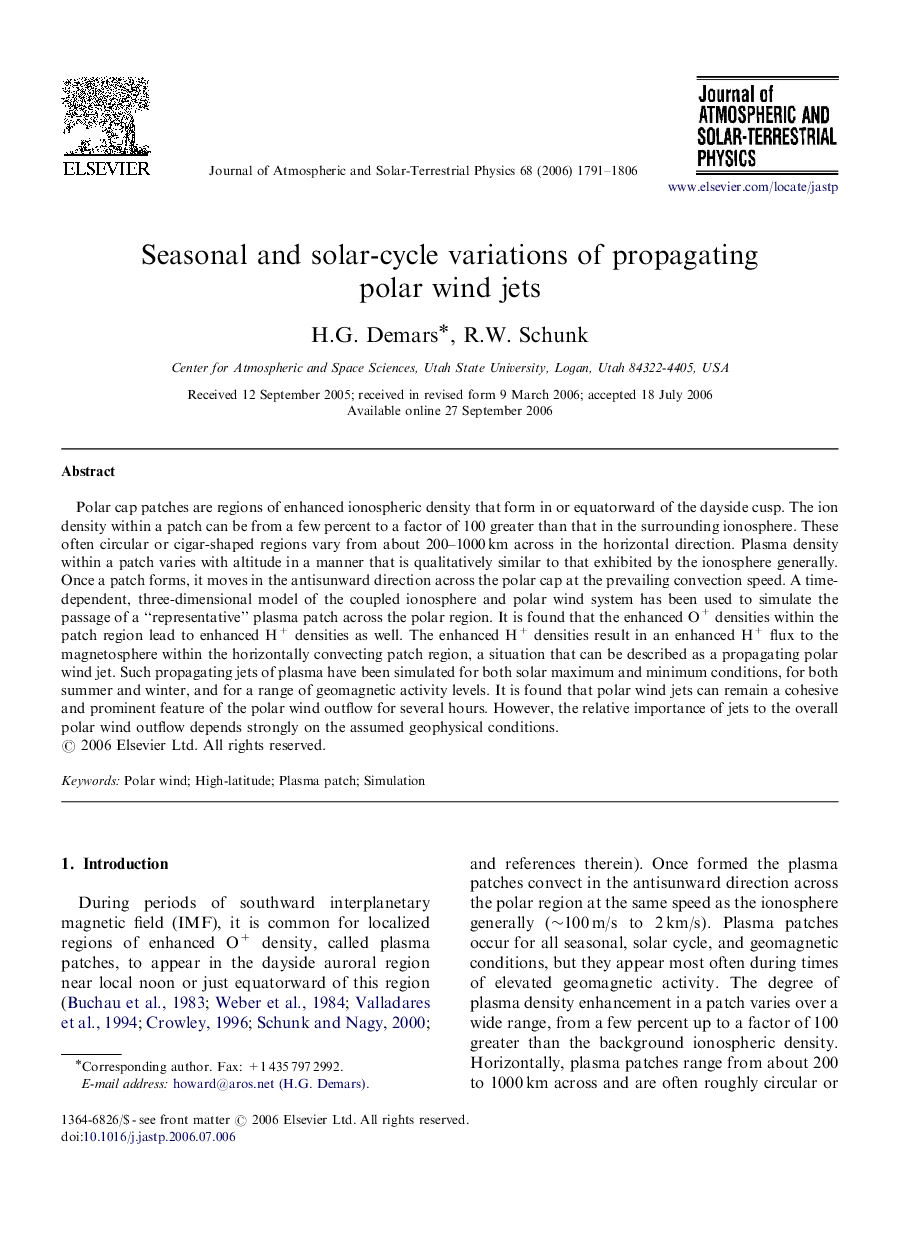| Article ID | Journal | Published Year | Pages | File Type |
|---|---|---|---|---|
| 1778228 | Journal of Atmospheric and Solar-Terrestrial Physics | 2006 | 16 Pages |
Abstract
Polar cap patches are regions of enhanced ionospheric density that form in or equatorward of the dayside cusp. The ion density within a patch can be from a few percent to a factor of 100 greater than that in the surrounding ionosphere. These often circular or cigar-shaped regions vary from about 200-1000Â km across in the horizontal direction. Plasma density within a patch varies with altitude in a manner that is qualitatively similar to that exhibited by the ionosphere generally. Once a patch forms, it moves in the antisunward direction across the polar cap at the prevailing convection speed. A time-dependent, three-dimensional model of the coupled ionosphere and polar wind system has been used to simulate the passage of a “representative” plasma patch across the polar region. It is found that the enhanced O+ densities within the patch region lead to enhanced H+ densities as well. The enhanced H+ densities result in an enhanced H+ flux to the magnetosphere within the horizontally convecting patch region, a situation that can be described as a propagating polar wind jet. Such propagating jets of plasma have been simulated for both solar maximum and minimum conditions, for both summer and winter, and for a range of geomagnetic activity levels. It is found that polar wind jets can remain a cohesive and prominent feature of the polar wind outflow for several hours. However, the relative importance of jets to the overall polar wind outflow depends strongly on the assumed geophysical conditions.
Keywords
Related Topics
Physical Sciences and Engineering
Earth and Planetary Sciences
Geophysics
Authors
H.G. Demars, R.W. Schunk,
